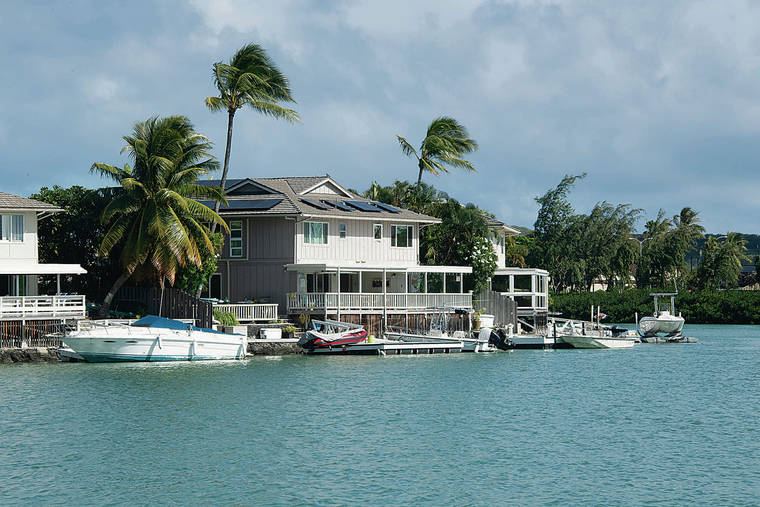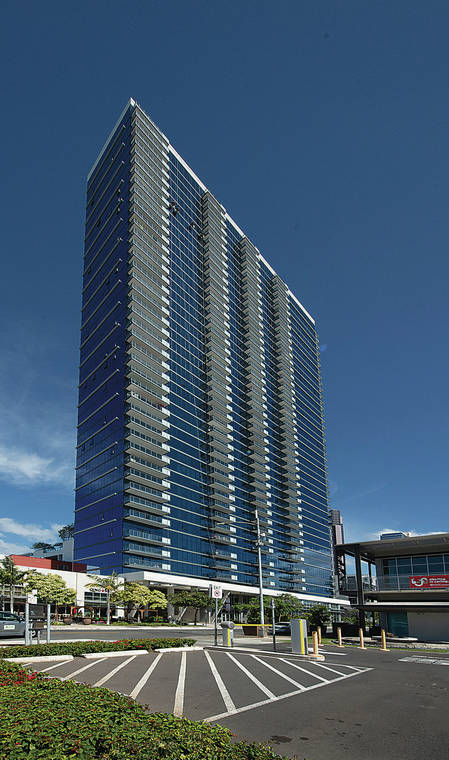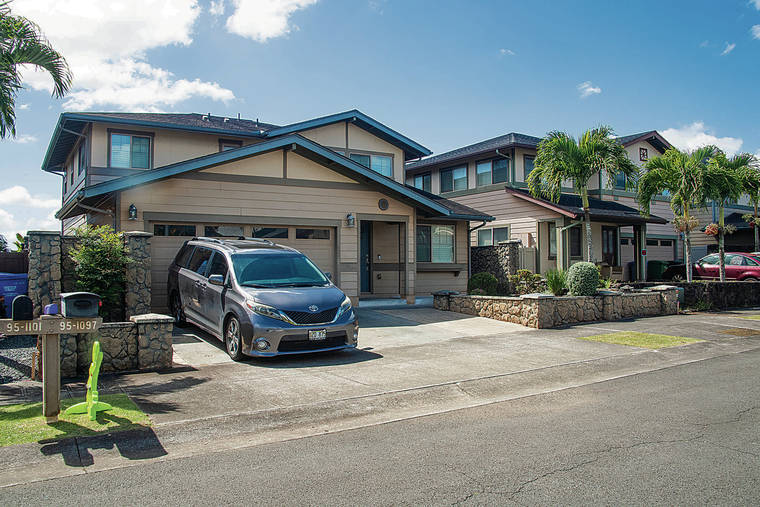An odd thing has happened in the realm of affordable housing on Oahu.
A two-bedroom home that costs $1 million technically can be defined as “affordable” for some households eligible for government-subsidized housing.
This circumstance exists under guidelines of a state agency that helps developers produce affordable housing and occurred as mortgage interest rates fell to very low levels in recent months.
It’s unlikely developers could actually produce and sell $1 million homes to satisfy an affordable-housing condition under state and county requirements typically tied to projects that receive zoning changes, development bonuses and fee waivers.
Still, the allowance draws attention to longstanding criticism that regulations defining affordable housing in Hawaii are “out of whack.“
“These formulas get to be so crazy that they get to be above market price,” said Kenna StormoGipson, an analyst with a Hawaii Appleseed Center for Law and Economic Justice project called the Hawaii Budget and Policy Center. “Their guidelines clearly need revamping.”
StormoGipson is referring largely to guidelines of the Hawaii Housing Finance and Development Corp., a state agency that helps private developers produce affordable housing.
Similar formulas are also used by the city and the Hawaii Community Development Authority, a state agency regulating development in Kakaako, where some of the priciest condominium towers on Oahu have been built.
Three factors — household income, family size and interest rates — are mainly used to compile annual housing affordability tables.
HHFDC starts with federal data for Honolulu’s median household income, which was $101,600 last year, meaning half of all households earned more and half earned less.
This figure is then adjusted in a way that results in Honolulu’s median income being defined by family size, including $88,200 for a single person and $125,900 for a family of four.
Furthermore, HHFDC rules allow households earning as much as 140% of the median income to qualify for subsidized housing. That limit equates to $123,480 for a single person and $176,260 for a family of four.
Under current guidelines, a family of four in Honolulu earning 140% of the median income can qualify for subsidized housing priced as high as $1,026,800.
The affordable home price ceiling is based in part on a 3% interest rate and a 5% down payment.
The average interest rate nationally for a 30-year fixed mortgage recently was 2.7%, which means the current affordable price could be over $1,026,800 for a two-bedroom home.
HHFDC also notes that its price ceiling could be lower after accounting for costs including real property taxes, insurance and any maintenance or homeowner association fees.
Much of HHFDC’s work helps developers tap federal and state tax credits that finance housing for low-income households. But some affordable-housing advocates question the need to subsidize housing for households earning well above the median income — and that issue is not new or limited to HHFDC.
In 2013, critics of a planned “workforce housing” tower in Kakaako called 801 South Street B assailed the project in part because its most expensive below-market unit was forecast to sell for $692,300 under an HCDA formula that allowed a two-bedroom unit to be priced as high as $715,213 at the time for households earning up to 140% of the median income.
Price of paradise
Last year at the state Legislature, then-Sen. Laura Thielen and Sens. Kurt Fevella and Sharon Moriwaki introduced a resolution to have HHFDC review and compare its affordable home price guideline methodology with other places that have high housing costs.
Senate Concurrent Resolution 220 noted that San Francisco, in comparison with Honolulu, had a 38% higher household median income but a 23% lower maximum affordable housing price in 2019.
The resolution, which asked HHFDC to report the results of an analysis to the Legislature before this year’s session, did not get a hearing and was not adopted.
Three years ago, the city and HCDA reduced their maximum home price guidelines by lowering the household income limit to 120% of the median, which equates to $151,080 for a family of four.
However, some of the biggest master-planned communities on Oahu are now in relatively early stages of producing hundreds of homes subject to the older, higher limit.
The city and HCDA said their current maximum price for homes at the 120% of median income limit would be around $700,000 for a family of four.
Developers note that affordable-housing regulations require a range of affordability that can include lower price limits tied to incomes at 80% of the median, and that maximum regulated prices are typically above realistic selling prices because of conditions put on buyers and competition from market-price homes.
Such conditions can include the right of a government agency to buy back the home for a below-market price if sold within a number of years, and a requirement that the homeowner pay an agency a share of appreciation no matter when the home is resold.
“The pricing of these homes is really based on what buyers value them at with all of the restrictions that are placed on them,” said Race Randle, senior vice president of planning and development in Hawaii for Howard Hughes Corp., the developer of Ward Village in Kakaako.
New developments
At the most recent Ward Village tower to include below-market condos, studios were sold in 2018 for $286,000 to $443,000, along with one-bedroom units for up to $487,314, at the project called ‘A‘ali‘i, which is nearing completion under HCDA guidelines with prices linked to incomes ranging from the median to 140% of the median.
Ward Village must include around 900 below-market homes under a master plan subject to pre-2018 price limit guidelines tied to 140% of the median income. Kamehameha Schools is also subject to the older rules for its Our Kakaako community, where about 550 below-market homes need to be produced.
Deepak Neupane, HCDA executive director, said the agency tries to ensure that below-market home prices are affordable to households that qualify for interest rates above published averages because many people don’t qualify for the average rate.
Neupane said a below-market condo with two bedrooms produced in Kakaako under HCDA rules today under current rules would probably sell for around $500,000 when accounting for buyer conditions, maintenance fees, taxes and insurance.
Developers in Kakaako, however, also may deliver affordable housing under HHFDC rules if they produce a greater share of below-market homes.
At the planned Kakaako condo tower Ililani subject to HHFDC guidelines, below-market prices for units with one to two bedrooms range from $459,400 to $649,100.
At Sky Ala Moana, a tower rising near Oahu’s largest shopping center, the developer agreed to produce 84 affordable condos under city regulations allowing maximum prices tied to 120% of median household incomes. The 84 homes are expected to be sold later this year for $267,750 to $511,350 for studios to two-bedroom units.
Half the affordable Sky units come with a condition allowing the city to acquire the home for a below-market price if an owner sells within 30 years, and the other half will have a buyback term between 10 years and 30 years depending on buyer demand.
In Central Oahu, developer Castle & Cooke Hawaii delivered its first market-priced home at Koa Ridge in November and expects to have an initial increment of 140 affordable homes finished late this year and early next year as part of an agreement calling for 1,050 affordable homes at the3,500-home project between Waipio and Mililani.
Prices in the initial affordable subdivision dubbed Malina have not yet been set, but would largely align with city guidelines allowing homes priced from $400,000 to $700,000 for households with two or three people earning up to 120% of the median income.
Overall, Koa Ridge may produce affordable housing geared for households earning up to 140% of the median income.
Initial market-price homes at Koa Ridge range from the high $800,000s to $1 million, which technically could qualify as affordable housing if HHFDC guidelines applied.
“These formulas are out of whack,” StormoGipson said. “They need to be revisited and they need to be redone.”








